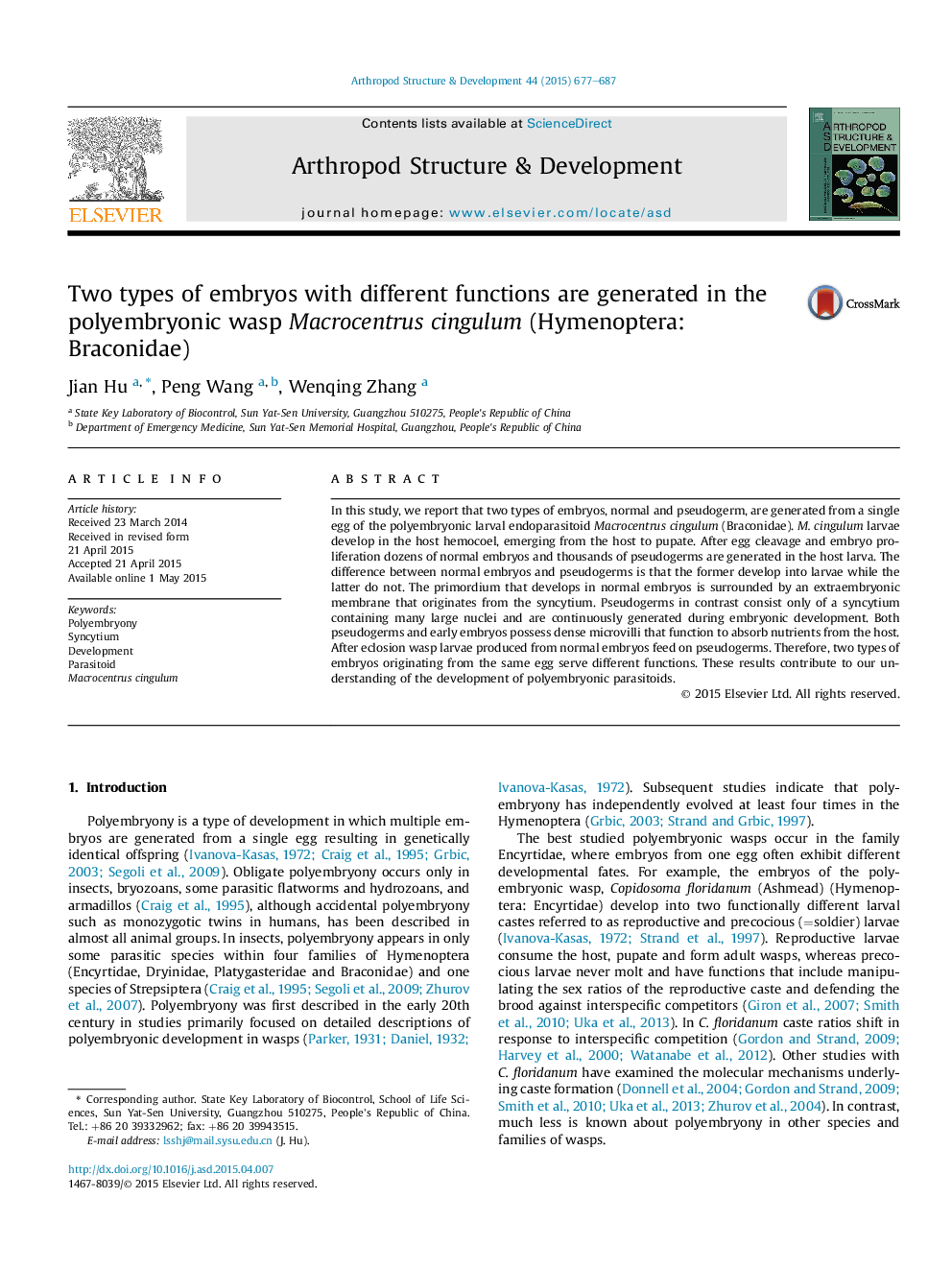| Article ID | Journal | Published Year | Pages | File Type |
|---|---|---|---|---|
| 2778517 | Arthropod Structure & Development | 2015 | 11 Pages |
•Embryos and Pseudogerms are generated from one egg in Macrocentrus cingulum, a polyembryonic developed parasitoid.•Pseudogerm of M. cingulum is a syncytium, and is generated companying the development of embryos.•Embryos of M. cingulum were enveloped by a layer of embryonic membrane origin of syncytium similar to pseudogerm.•Larva of M. cingulum consumes pseudogerm to accomplish development.
In this study, we report that two types of embryos, normal and pseudogerm, are generated from a single egg of the polyembryonic larval endoparasitoid Macrocentrus cingulum (Braconidae). M. cingulum larvae develop in the host hemocoel, emerging from the host to pupate. After egg cleavage and embryo proliferation dozens of normal embryos and thousands of pseudogerms are generated in the host larva. The difference between normal embryos and pseudogerms is that the former develop into larvae while the latter do not. The primordium that develops in normal embryos is surrounded by an extraembryonic membrane that originates from the syncytium. Pseudogerms in contrast consist only of a syncytium containing many large nuclei and are continuously generated during embryonic development. Both pseudogerms and early embryos possess dense microvilli that function to absorb nutrients from the host. After eclosion wasp larvae produced from normal embryos feed on pseudogerms. Therefore, two types of embryos originating from the same egg serve different functions. These results contribute to our understanding of the development of polyembryonic parasitoids.
